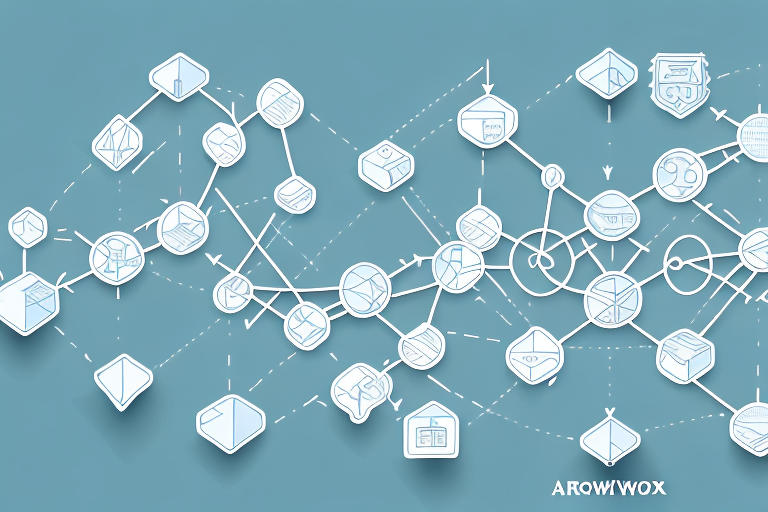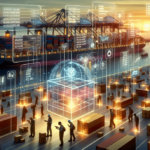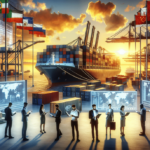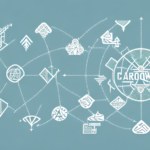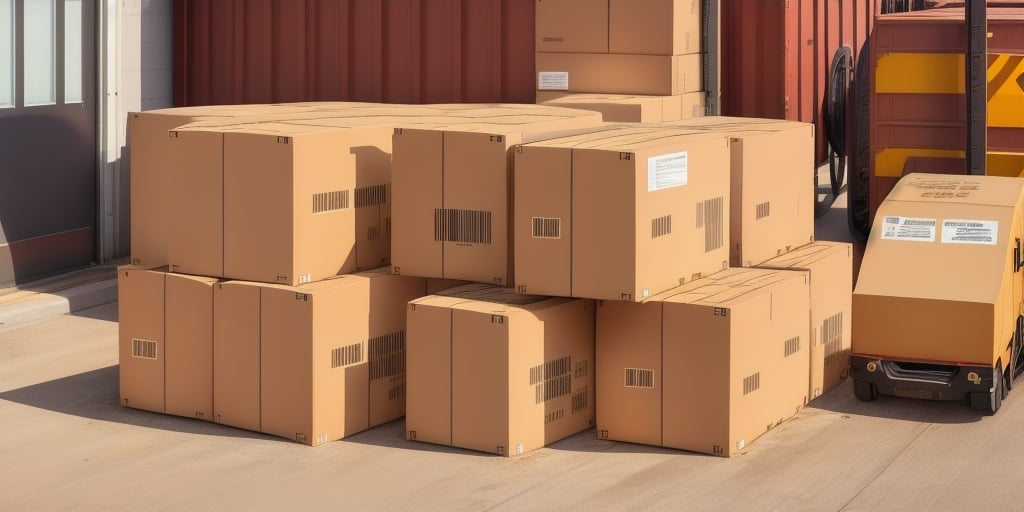Exploring the Benefits of Tariff Engineering in Supply Chain Management
Tariff engineering is a strategic tool that can help companies optimize their supply chains and achieve greater operational efficiency. By leveraging the various tariff structures in place, businesses can create innovative and cost-effective solutions to mitigate risks and streamline their operations. In this article, we will explore the many benefits of tariff engineering in supply chain management, including its role in managing international trade risks, achieving competitive pricing strategies, and optimizing global supply chains.
What is Tariff Engineering and How Does it Work in Supply Chain Management?
Tariff engineering is a strategic approach to managing supply chain risks by utilizing tariff structures to create cost-effective solutions. This involves analyzing tariff codes and other regulatory requirements that govern the movement of goods across borders, finding ways to minimize or eliminate the costs associated with those requirements. Strategies may include using specific materials or components that attract lower tariffs or strategically locating manufacturing facilities to take advantage of favorable trade policies in certain regions.
The key to effective tariff engineering is a deep understanding of the regulatory framework and the ability to use it to your advantage. Businesses adept at this can maintain their competitive edge and achieve greater operational efficiency.
One example of tariff engineering is the use of "tariff shift" or "tariff inversion" strategies. This involves modifying product design or manufacturing processes to change the classification of the product under the tariff code, resulting in a lower tariff rate. For instance, a company may alter the composition of a product to qualify for a lower tariff rate or change the product's country of origin to benefit from a preferential trade agreement.
According to a 2023 World Trade Report, effective tariff engineering can reduce import costs by up to 15%, significantly impacting overall supply chain costs.
The Role of Tariff Engineering in Managing International Trade Risks
Managing trade risks is a critical aspect of supply chain management, and tariff engineering plays a pivotal role in this process. By meticulously analyzing the regulatory landscape and identifying potential risks, businesses can design supply chain solutions that mitigate these risks and minimize compliance costs. For example, by designing supply chains that account for trade agreements and special tariff classifications, businesses can reduce the impact of tariffs and other regulatory requirements, lowering the risk of disruptions and delays.
Tariff engineering also enables the optimization of free trade zones, designated areas where goods can be imported, stored, and processed without being subject to customs duties or other taxes. Strategically locating operations in these zones allows businesses to take advantage of lower costs and reduced regulatory burdens, while also minimizing the risk of trade disruptions and delays.
Moreover, tariff engineering assists businesses in adapting to changing trade policies and regulations. Staying updated on changes in the regulatory landscape allows businesses to proactively adjust their supply chain strategies to minimize the impact of new tariffs, quotas, or other trade restrictions. This may involve reevaluating supplier relationships, adjusting product designs, or exploring alternative sourcing options.
For more insights on managing trade risks, refer to the ShipScience Trade Risk Management Guide.
How Tariff Engineering Helps Companies Achieve Competitive Pricing Strategies
Effective pricing strategies are essential for businesses aiming to remain competitive in the global economy. Tariff engineering facilitates this by minimizing costs and increasing flexibility in supply chains. By taking advantage of favorable tariff structures and other regulatory frameworks, businesses can develop cost-effective solutions that enable them to offer more competitive pricing to customers, thereby maintaining a competitive advantage even in saturated markets.
Furthermore, tariff engineering aids companies in optimizing their production processes and reducing waste. By analyzing tariff structures and regulations across different markets, businesses can identify opportunities to streamline their supply chains and decrease the costs associated with importing or exporting goods. This leads to more efficient production processes, lower costs, and ultimately, more attractive pricing for customers.
In addition, tariff engineering helps companies navigate complex regulatory environments and ensure compliance with local laws and regulations, which is a significant challenge for businesses operating in multiple countries or regions.
According to a report by Global Trade Review, companies that implement tariff engineering strategies see an average cost reduction of 10-20% in their supply chain operations.
Advantages and Disadvantages of Tariff Engineering in Supply Chain Management
While tariff engineering offers numerous advantages in supply chain management, it also comes with potential drawbacks that businesses should consider. On the positive side, tariff engineering can help businesses minimize costs, optimize operations, and improve efficiencies. However, there are inherent risks, including potential regulatory compliance issues, supply chain disruptions, and the need for specialized expertise to design and implement effective solutions.
Another potential disadvantage is the impact tariff engineering can have on international trade relations. Manipulating tariffs and trade regulations may be perceived as engaging in unfair trade practices, potentially leading to trade disputes or retaliation from other countries. Additionally, tariff engineering may not always be a sustainable solution, as changes in trade policies or market conditions can quickly render these strategies ineffective. Therefore, businesses should carefully weigh the benefits and risks before implementing tariff engineering in their supply chain management.
For a balanced view, refer to the ShipScience Pros and Cons of Tariff Engineering.
Key Considerations for Implementing Tariff Engineering in Your Supply Chain Strategy
Implementing tariff engineering in your supply chain strategy requires meticulous planning and execution. To achieve the desired benefits, it is essential to understand the regulatory landscape and identify the most effective strategies for your business. Key considerations include analyzing tariff structures and trade agreements, evaluating the impact of regulatory compliance on supply chain operations, and building a robust network of suppliers and partners to support your tariff engineering goals.
- Analyze current tariff structures and identify opportunities for cost reduction.
- Evaluate existing trade agreements and their implications on your supply chain.
- Assess the potential impact of regulatory compliance on operations.
- Build strategic partnerships with suppliers and logistics partners to enhance tariff engineering efforts.
Another important aspect is considering the potential impact on customers. Transparently communicating any changes in pricing or product availability is crucial. Additionally, it may be necessary to adjust marketing and sales strategies to accommodate changes in product offerings or pricing. By keeping customers informed and engaged throughout the process, businesses can minimize negative impacts and maintain strong customer relationships.
For more detailed guidelines, visit the Implementation Guide by ShipScience.
Best Practices for Using Tariff Engineering to Optimize Your Supply Chain Operations
To effectively optimize supply chain operations using tariff engineering, businesses should adhere to several best practices:
- Understand the Regulatory Landscape: Develop a comprehensive understanding of relevant tariff codes, trade agreements, and regulatory requirements.
- Leverage Technology and Data Analytics: Utilize advanced technologies and data analytics to inform supply chain decisions and identify cost-saving opportunities.
- Build Strong Partnerships: Collaborate with suppliers and logistics partners to implement effective tariff engineering strategies.
- Continuous Evaluation: Regularly assess and refine tariff engineering strategies to adapt to changing market conditions and regulatory environments.
Staying updated on changes to trade policies and regulations is also essential. This involves monitoring government announcements, news sources, and engaging with industry associations and trade experts to stay informed about potential changes that could impact your business.
Additionally, consider the overall business strategy. While optimizing supply chain operations can lead to cost savings, it's important to ensure these efforts align with broader business goals such as brand reputation, customer satisfaction, and long-term sustainability.
For comprehensive best practices, refer to the ShipScience Best Practices Guide.
Examples of Successful Implementation of Tariff Engineering in Global Supply Chains
Many businesses have successfully implemented tariff engineering strategies to optimize their global supply chains. For example, Volvo leverages tariff engineering to enhance its manufacturing and supply chain operations across multiple regions. By strategically locating manufacturing facilities, sourcing materials and components from low-tariff regions, and utilizing special trade agreements, Volvo maintains a competitive edge and achieves greater operational efficiency.
Apple Inc. is another example of successful tariff engineering. The company reduces manufacturing costs by sourcing components from countries with lower tariffs. For instance, Apple sources its iPhone screens from Japan, which offers a lower tariff rate compared to other countries. Additionally, Apple strategically locates its manufacturing facilities in countries like China to take advantage of special trade agreements, thereby reducing tariffs on imported components. These tariff engineering strategies enable Apple to maintain its competitive edge in the global market and offer products at competitive prices.
For more case studies, visit the ShipScience Case Studies.
Common Challenges Faced by Companies Implementing Tariff Engineering Strategies
Implementing tariff engineering strategies in supply chain management can present several challenges, including:
- Regulatory Compliance: Navigating complex regulatory requirements can be daunting and may require specialized expertise.
- Supply Chain Disruptions: Changes in tariffs or trade policies can lead to unexpected disruptions and delays.
- Transparency Issues: Lack of transparency in the supply chain can make it difficult to identify the origin of goods and determine appropriate tariff classifications.
- Increased Implementation Costs: Costs related to hiring specialized expertise, implementing new technologies, and navigating regulatory environments can be significant.
To overcome these challenges, businesses should:
- Implement technology solutions such as blockchain to enhance supply chain transparency and traceability.
- Partner with other businesses to share resources and expertise or outsource certain aspects of supply chain management to third-party logistics providers.
- Continuously monitor and adapt to changes in the regulatory environment to mitigate potential risks.
Addressing these challenges effectively requires a strategic approach and ongoing commitment to optimizing tariff engineering strategies.
Learn more about overcoming challenges in ShipScience's Guide to Tariff Engineering Challenges.
Future Outlook: Trends and Innovations in Tariff Engineering for Supply Chain Management
The landscape of tariff engineering and supply chain management is continually evolving, with emerging technologies, trends, and innovations shaping the future. Businesses aiming to remain competitive must stay abreast of these changes, continuously adapting and optimizing their strategies for optimal results. Key trends and innovations include:
- Expansion of Global Trade: Increasing globalization continues to create new opportunities and challenges for tariff engineering.
- Digital Supply Chain Technologies: Advanced digital tools and platforms are enhancing supply chain visibility and efficiency.
- Automation and Machine Learning: Automation and AI-driven analytics are being leveraged to optimize supply chain operations and forecasting.
- Blockchain Technology: The adoption of blockchain is improving supply chain transparency and traceability.
- Predictive Analytics: Utilizing predictive analytics to forecast demand and optimize inventory management.
One emerging trend is the use of blockchain technology to enhance supply chain transparency and traceability. By utilizing a decentralized ledger to track goods and transactions, businesses can ensure their supply chains are free from fraud, counterfeiting, and other illicit activities, thereby building trust with customers and stakeholders while improving regulatory compliance.
Another area of innovation is the application of predictive analytics to forecast demand and optimize inventory management. By analyzing historical data and employing machine learning algorithms, businesses gain insights into consumer behavior and market trends, enabling more informed decisions about ordering quantities and timing. This approach helps reduce waste, minimize stockouts, and improve overall supply chain efficiency.
In conclusion, tariff engineering is a powerful tool for businesses seeking to optimize supply chain operations, reduce costs, and maintain a competitive edge in the global economy. By carefully analyzing the regulatory landscape, leveraging specialized expertise, and building strong partnerships with suppliers and logistics partners, businesses can harness the benefits of tariff engineering to achieve greater operational efficiency and sustainability.
Stay updated on the latest trends and innovations by visiting the ShipScience Future Trends Report.













